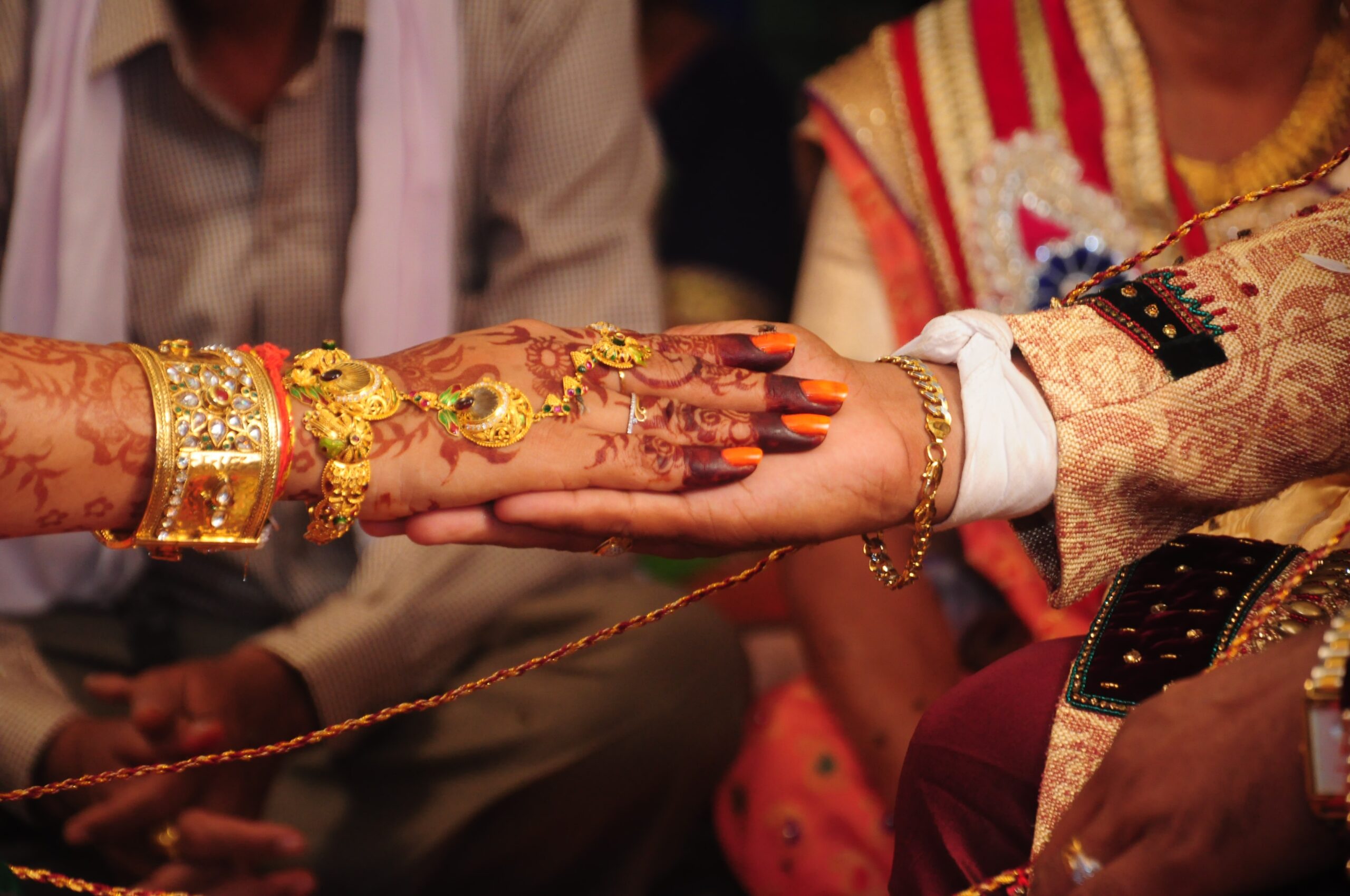Hindu marriages are characterized by elaborate rituals and customs passed down through generations. These rituals and customs are not just a celebration of love and union between two individuals but also have deep spiritual and cultural significance. These rituals have not only religious or spiritual significance but also carry scientific and logical explanations behind them. Here are some of the popular Hindu marriage rituals and the science behind them:
- Aashirvad: After the wedding ceremony the elders bless the couple during the Aashirvad ceremony. This ritual creates a positive and supportive environment for the couple and helps to ensure a happy and successful married life. This ritual helps to establish a sense of belongingness and creates a feeling of respect and gratitude towards the elders.
- Arundhati Darshan: The bride and groom are shown the star Arundhati, which is believed to be a symbol of marital bliss and harmony. From a scientific perspective, this ritual helps to inspire the couple to strive for a long and happy married life.
- Baraat: The groom arrives at the wedding venue on a decorated horse or car, accompanied by his family and friends. This ritual is believed to ward off evil spirits and bring good luck to the groom. The loud music of dhols and nagadas and dance help to release endorphins in the body, which reduces stress and creates a joyful atmosphere.
- Bidaai: The bride says goodbye to her family and leaves for her new home. This ritual helps to create a sense of closure and acceptance of the bride’s new life.
- Ganesh Pooja: This is the first ritual performed before any auspicious occasion in Hinduism. Lord Ganesh is worshipped as the remover of obstacles and the god of good beginnings. From a scientific perspective, this ritual helps to calm the mind and create a positive atmosphere. It is believed that invoking Lord Ganesha’s blessings at the beginning of the wedding ceremony brings good luck and success to the couple.
- Gathbandhan: The bride and groom’s clothes are tied together during the ceremony, symbolizing their union and commitment to each other.
- Griha Pravesh: The bride enters her new home, which is purified with holy water and grains. This ritual helps to create a positive and welcoming environment for the bride. This ritual helps to create a sense of belongingness and security for the bride, who is starting a new chapter in her life.
- Haldi ceremony: In this ritual, a paste made of turmeric, sandalwood, and other ingredients is applied to the bride and groom’s body. Turmeric has antiseptic, anti-inflammatory and healing properties that help to purify the skin. The ritual is also believed to bring good luck and ward off evil spirits.
- Hasta Melap: During the Hasta Melap ritual, the bride and groom’s hands are tied together with a sacred thread. This thread is believed to be infused with positive energy and helps to establish a strong emotional bond between the couple.
- Jaimala ceremony: In this ritual, the bride and groom exchange flower garlands. The fragrance of the flowers used in the garlands has a calming effect on the nervous system, which helps to reduce stress and anxiety. The ritual also signifies the acceptance of each other by the bride and groom.
- Kanyadaan: In this ritual, the father of the bride gives away his daughter to the groom. It is believed that the ritual signifies the transfer of responsibility from the father to the groom, who becomes the bride’s protector and provider. From a scientific perspective, this ritual helps to create a sense of belongingness and security for the bride.
- Kumbh Vivah: In some Hindu communities, a person who has Manglik dosha is married to a pot or a tree before getting married to a human being. This is believed to nullify the negative effects of the dosha.
- Mangalsutra: The groom ties a sacred thread or necklace, known as the Mangalsutra, around the bride’s neck during the Mangalsutra ceremony. From a scientific perspective, this ritual helps to create a strong emotional bond between the couple and also helps to maintain the health of the bride.
- Mehendi ceremony: Mehendi is a natural dye made from the leaves of the henna plant. In this ritual, the bride’s hands and feet are decorated with henna designs. The natural cooling properties of henna help to reduce stress and anxiety. The designs also help to regulate body temperature and stimulate blood circulation.
- Pag Phera: The bride visits her parent’s home after the wedding during the Pag Phera ceremony. This ritual helps to maintain the emotional connection between the bride and her parents and also creates a feeling of respect and gratitude.
- Saat Phere: In this ritual, the bride’s father gives away his daughter to the groom, and the couple takes seven vows while walking around the sacred fire. Each vow represents a promise that the couple makes to each other, such as promising to respect and support each other. From a scientific perspective, this ritual helps to establish a strong emotional connection between the couple and creates a sense of shared purpose. This ritual helps to promote physical and mental harmony between the couple.
- Saptapadi or Seven vows: This ritual involves the bride and groom taking seven vows while walking around the sacred fire. Each vow represents a promise that the couple makes to each other, such as promising to respect and support each other. From a scientific perspective, this ritual helps to establish a strong emotional connection between the couple and creates a sense of shared purpose.
- Sindoor: The groom applies sindoor or vermillion powder on the bride’s forehead during the Sindoor ceremony. This ritual signifies the bride’s status as a married woman and also has medicinal properties that help to maintain her health.
- Sindoor: The groom applies sindoor or vermillion powder on the parting of the bride’s hair, which symbolizes her status as a married woman. According to Ayurveda, sindoor is made from turmeric and other natural ingredients that have antiseptic and medicinal properties. It is believed that wearing sindoor on the parting of the hair helps to maintain the health of the bride.
- Swagatam: The bride’s family welcomes the groom and his family to their home. This ritual helps to create a warm and welcoming atmosphere that makes the groom feel comfortable and accepted.
- Vidaai: The Vidaai ceremony marks the bride’s departure from her parental home to her new home with her husband. From a scientific perspective, this ritual helps to create a sense of closure and acceptance for the bride and her family.
In conclusion, Hindu marriage rituals are not just symbolic but also have a scientific basis. These rituals help to create a strong emotional bond between the couple, establish a sense of belongingness and security, and maintain the health of the bride. They are an important part of the Hindu culture and have been passed down through generations as a way to celebrate the union of two individuals.




